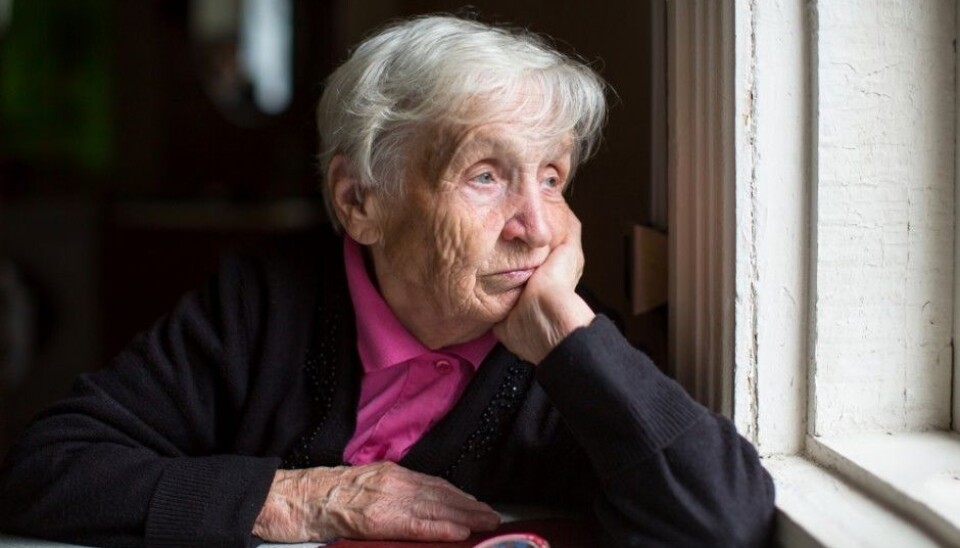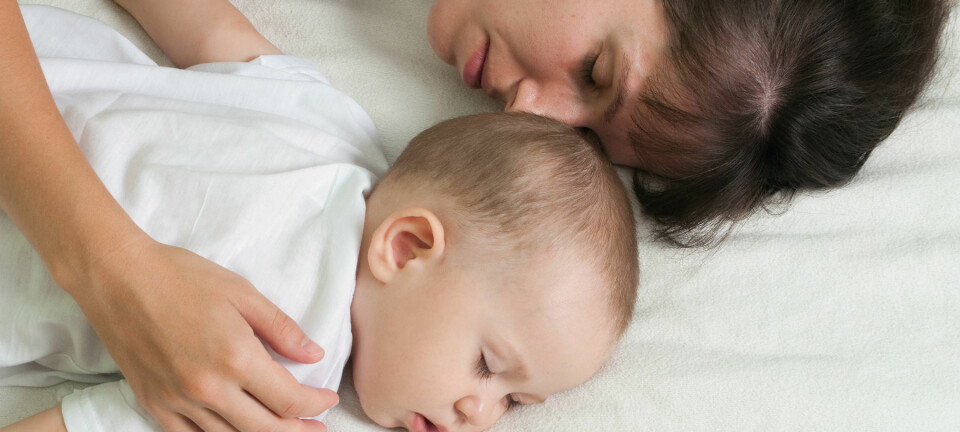
Many elderly live in silence about home violence and abuse
A large share of elderly persons experience their closest relatives or spouses as violent. Few talk about it.
Norway’s first national survey of the extent of violence and abuse against the elderly has now been released. The report is rather gloomy.
In eight out of ten cases, perpetrator is closely related or acquainted with the elderly victim.
Many have no one they can confide in when this occurs.
The risk of becoming a victim of violence and abuse is considerably higher if she or he has been subjected to such harm earlier in life.
Violence at home hushed up
Nearly 2,500 persons aged 65 to 90 who live at home were asked if they had experienced violence or abuse. They were also asked what relationship they had with the perpetrator.
“Only well below half the victims had reported what had happened to friends or family members. This was the same for the serious cases,” says Astrid Sandmoe.
She is one of the authors of the report prepared by researchers at the Norwegian Centre for Violence and Traumatic Stress Studies (NKVTS), which was recently released.
Few of the victims had contacted social services or reported what happened to the police.
“Violence and abuse are seen as a private concern. This is something to be hushed up and kept within the four walls of the house. That is the case for violence and abuse in general. But it is even a more prominent problem when it involves the elderly,” she says.
Around eight percent
The researchers are reluctant regarding an exact estimate of the extent of such abuse.
But they think it involves somewhere between 6.8 and 9.2 percent of the population.
Among the 168 persons who responded that they had been victims of violence or abuse, 98 percent claimed they had been subjected to mental or psychological harm.
In all, 58 persons checked yes to experiencing physical violence, 26 reported suffering sexual abuse and 21 had experienced financial abuse.
There were only small gender differences in the incidence of violence and abuse after reaching the age of 65.
Hard to study
Violence against the elderly is a taboo phenomenon. The researchers had previously found that such violence is nearly non-existent in registers of the police and the health-welfare services.
It is hard to study such a difficult theme as violence among close persons like spouses or family, explains Ole Kristian Hjemdal, one of the researchers behind the report.
The researchers used a questionnaire in their study. This included concrete questions to persons who had been subjected to serious physical violence and sexual abuse before the age of 65.
They also asked whether the participants whether serious or less serious physical violence or sexual, mental and economic abuse had occurred after reaching the age of 65.
Finally, they were asked whether they had experienced any of these in the past year.
The total share who responded to the questionnaire was 46 percent.
“Comprehensive questionnaires with complex themes can be hard to handle. Thus, not all the questionnaires were fully filled out. We also had lots of inconsistent answers.”
Hjemdal explained that the researchers spent much time in their analyses dealing with prospective mistakes or inconsistencies by the persons filling out the questionnaire.
He says that methodological problems add uncertainty to the extent of violence and abuse against the elderly.
A bad childhood lasts a whole life
One of the most important finds in the report on violence and rape from NKVTS from 2014 was the connection between being subjected to violence as children and violence as an older person.
The researchers find in this report that persons who have experienced serious physical violence and sexual abuse before the age of 65 ran eight times the risk of being subjected to it after reaching 65, when compared to those who had not suffered such awful experiences earlier in life.
“Much indicates that being vulnerable to violence is a fate that lasts a whole lifetime,” says Astrid Sandmoe.
Poorer health
This new study shows that the lives of both women and men who were subjected to violence after the age of 65 had been sadder and more unfortunate than the norm.
They were less satisfied with their lives and considered their own health to be much worse than the health of others who had not been victims of such violence and abuse. The persons who had suffered violence both before and after the age of 65 comprised the group that stood out as the least fortunate in many capacities.
The researchers conclude that violence and abuse against elderly persons is a serious social and public health problem in Norway.
-------------------------------------
Read the Norwegian version of this article at forskning.no
Translated by: Glenn Ostling
































